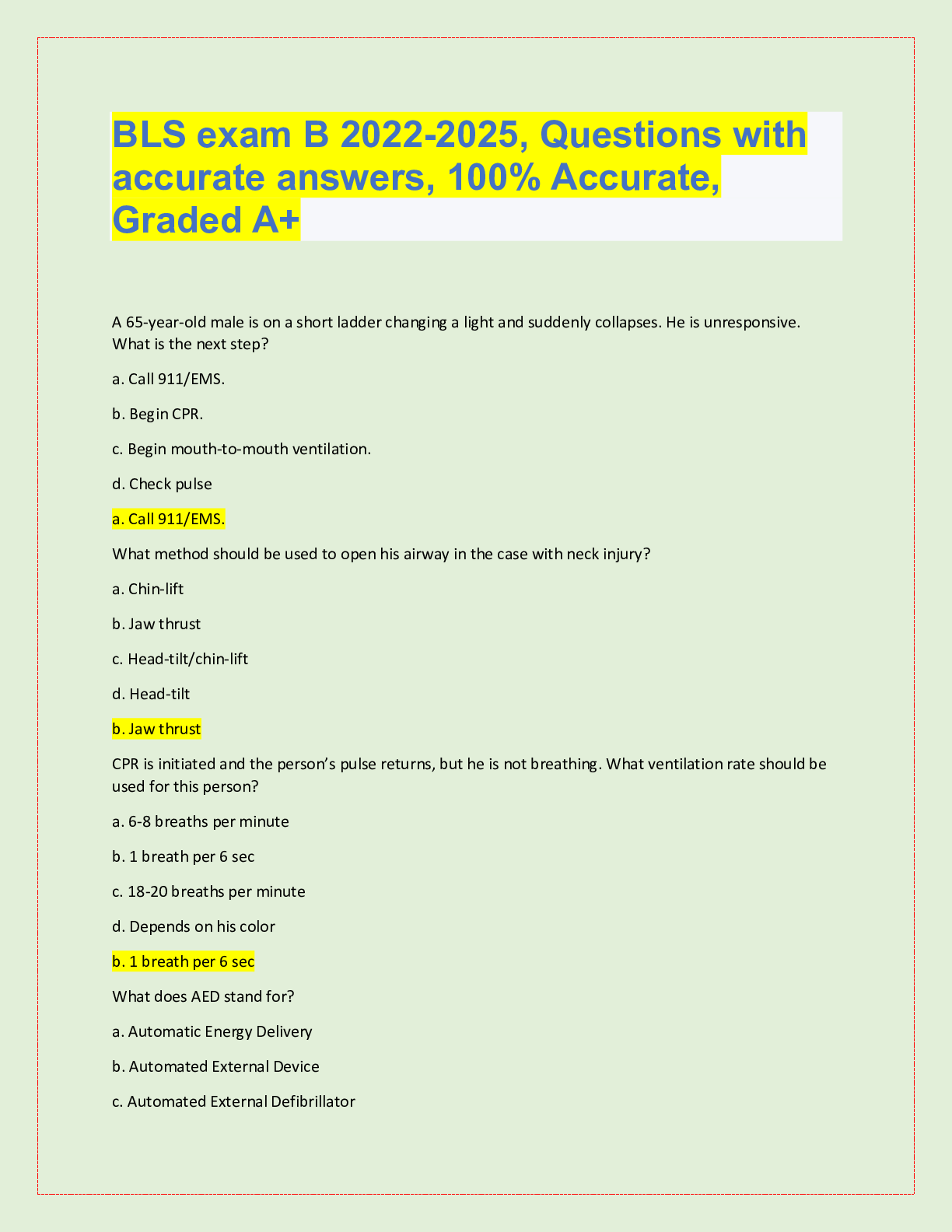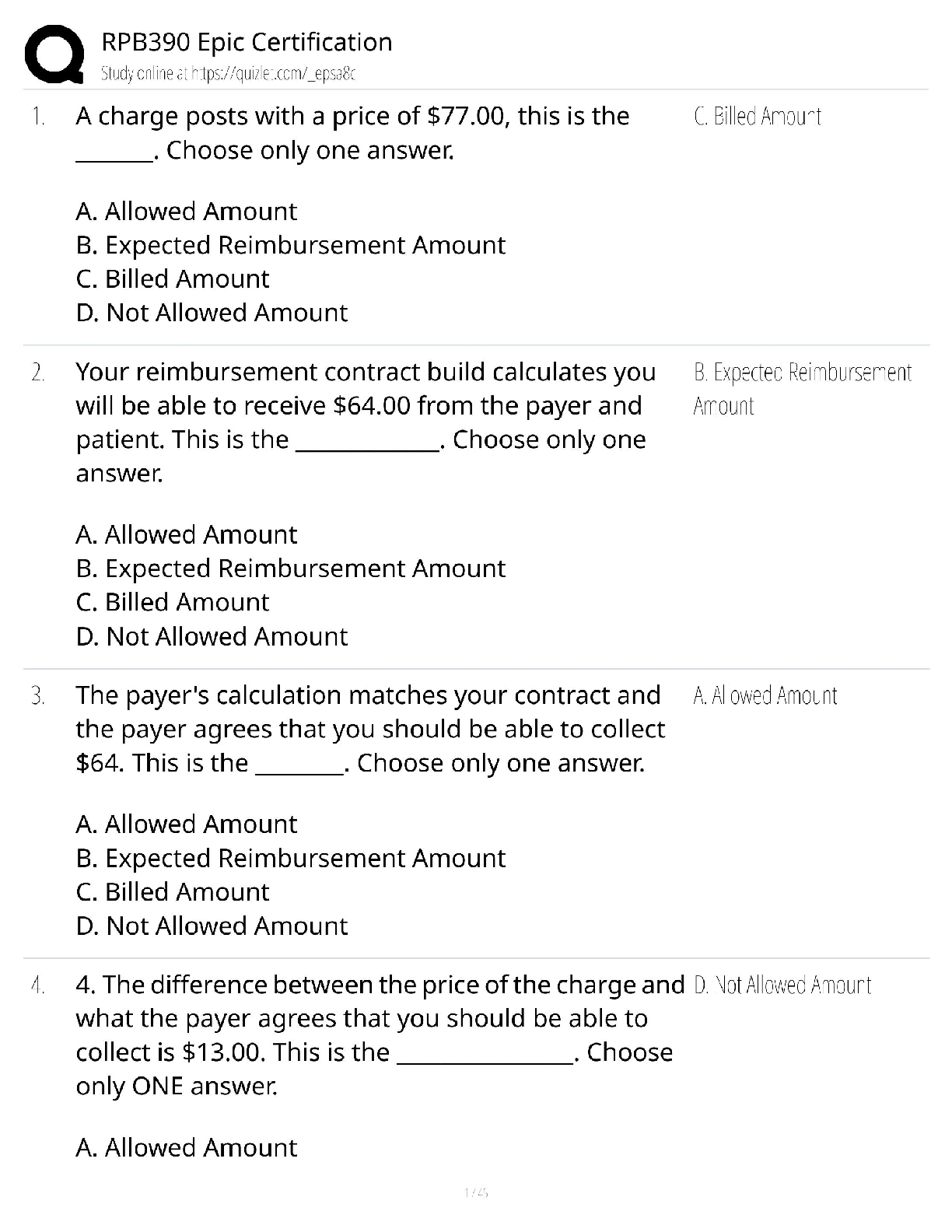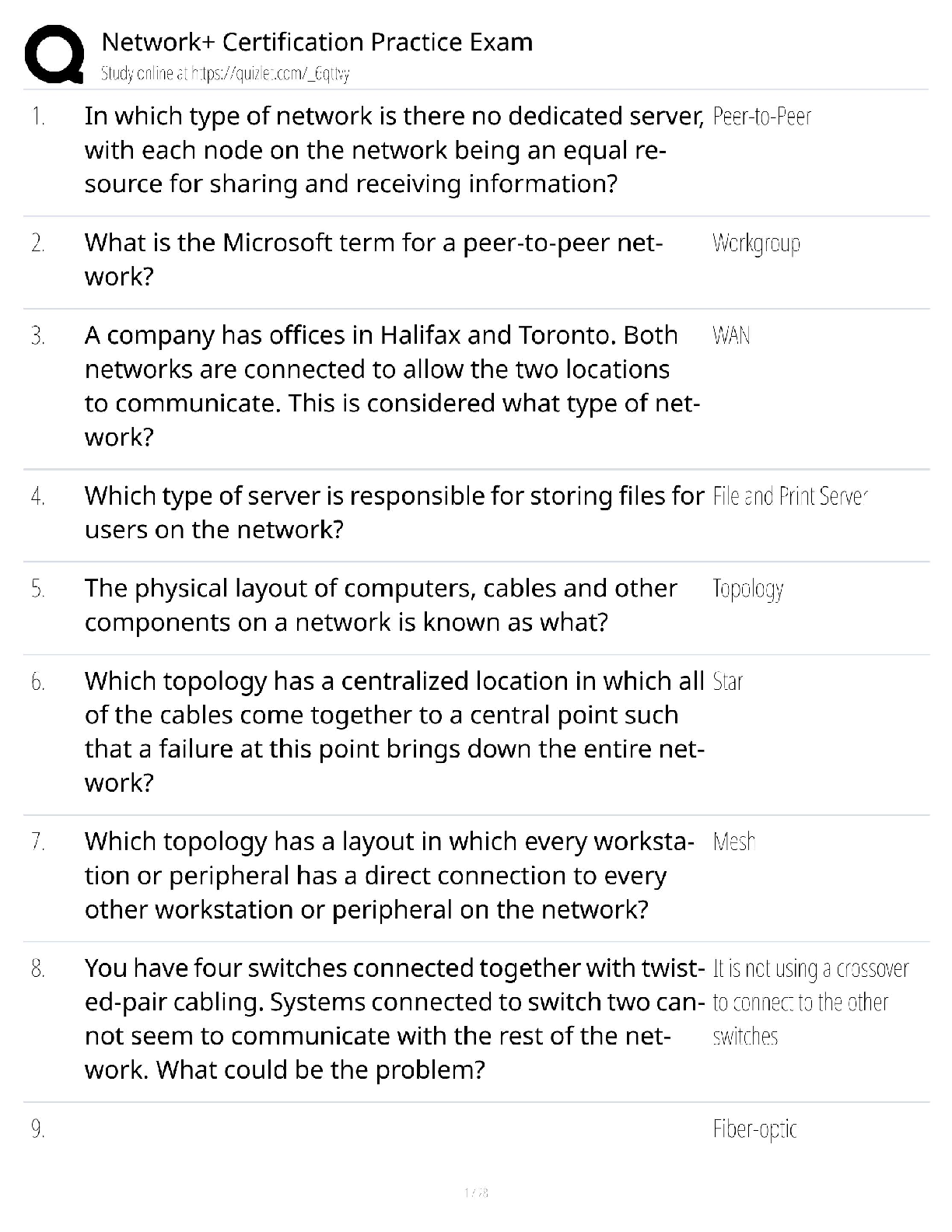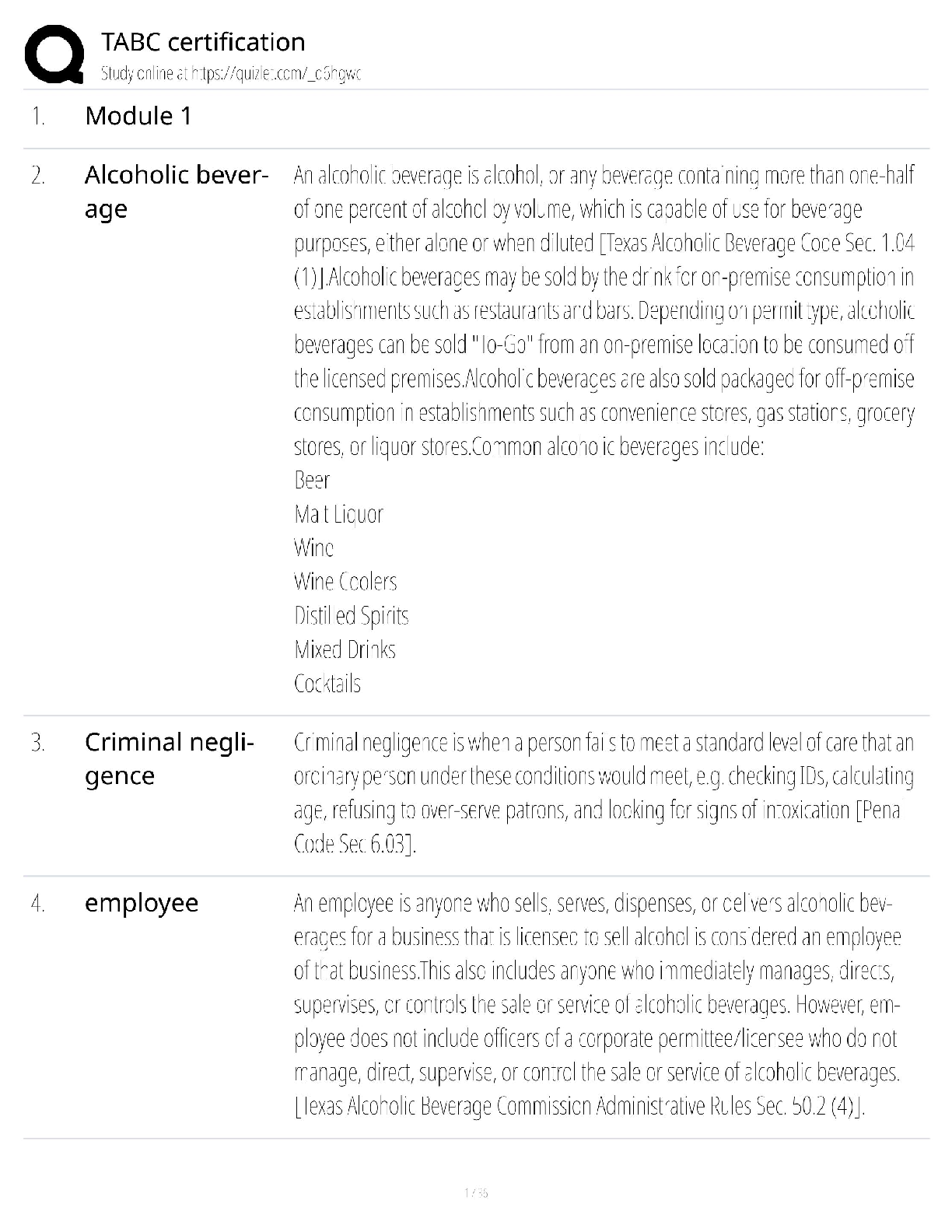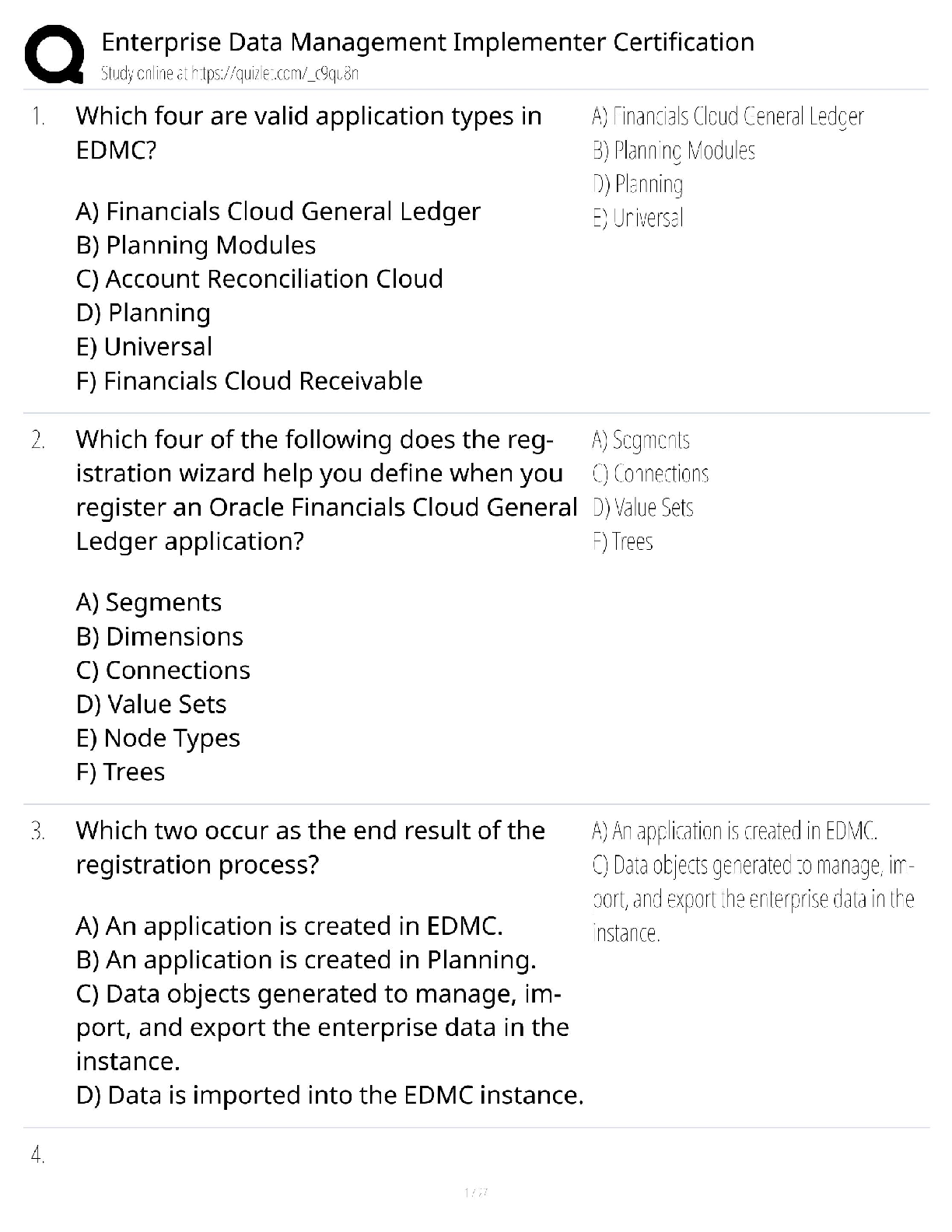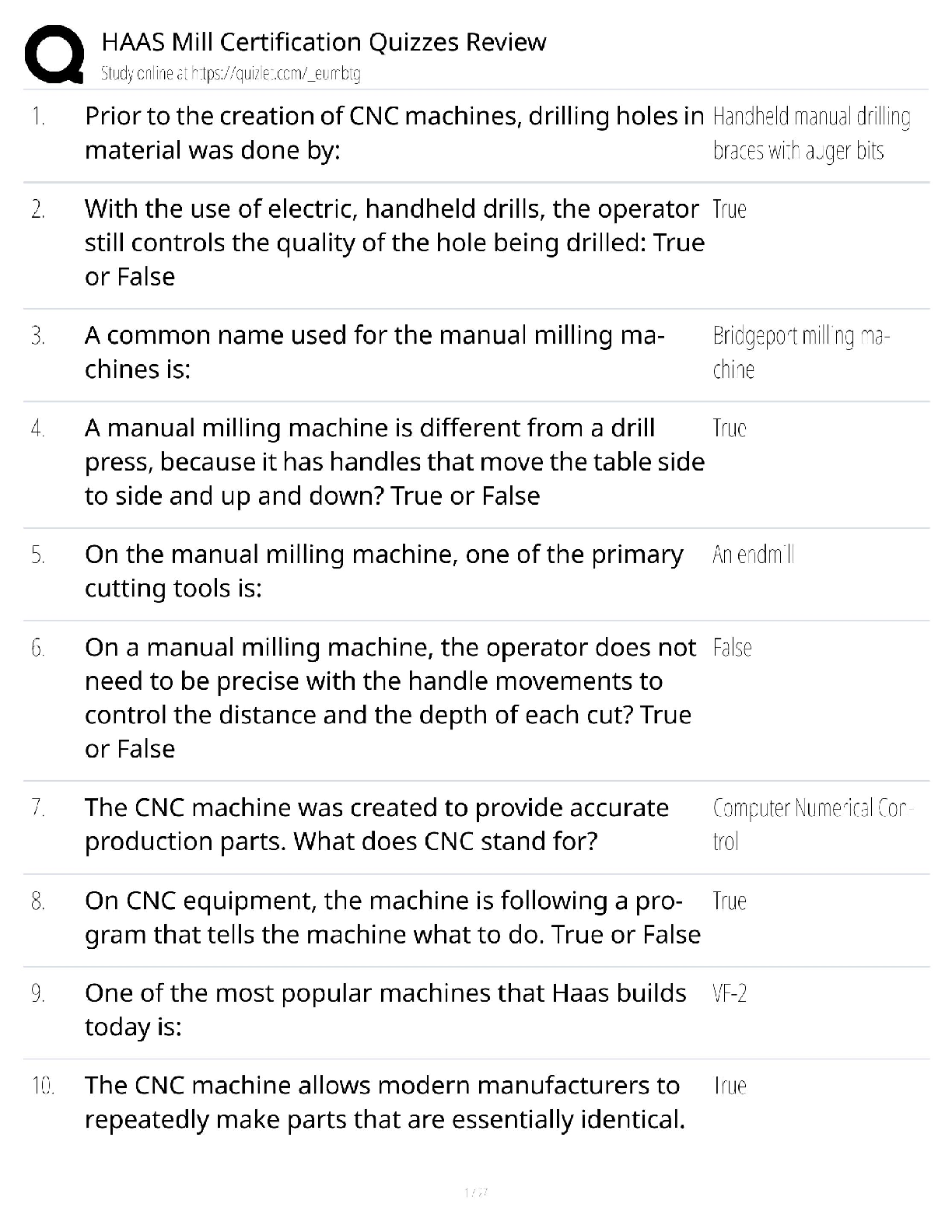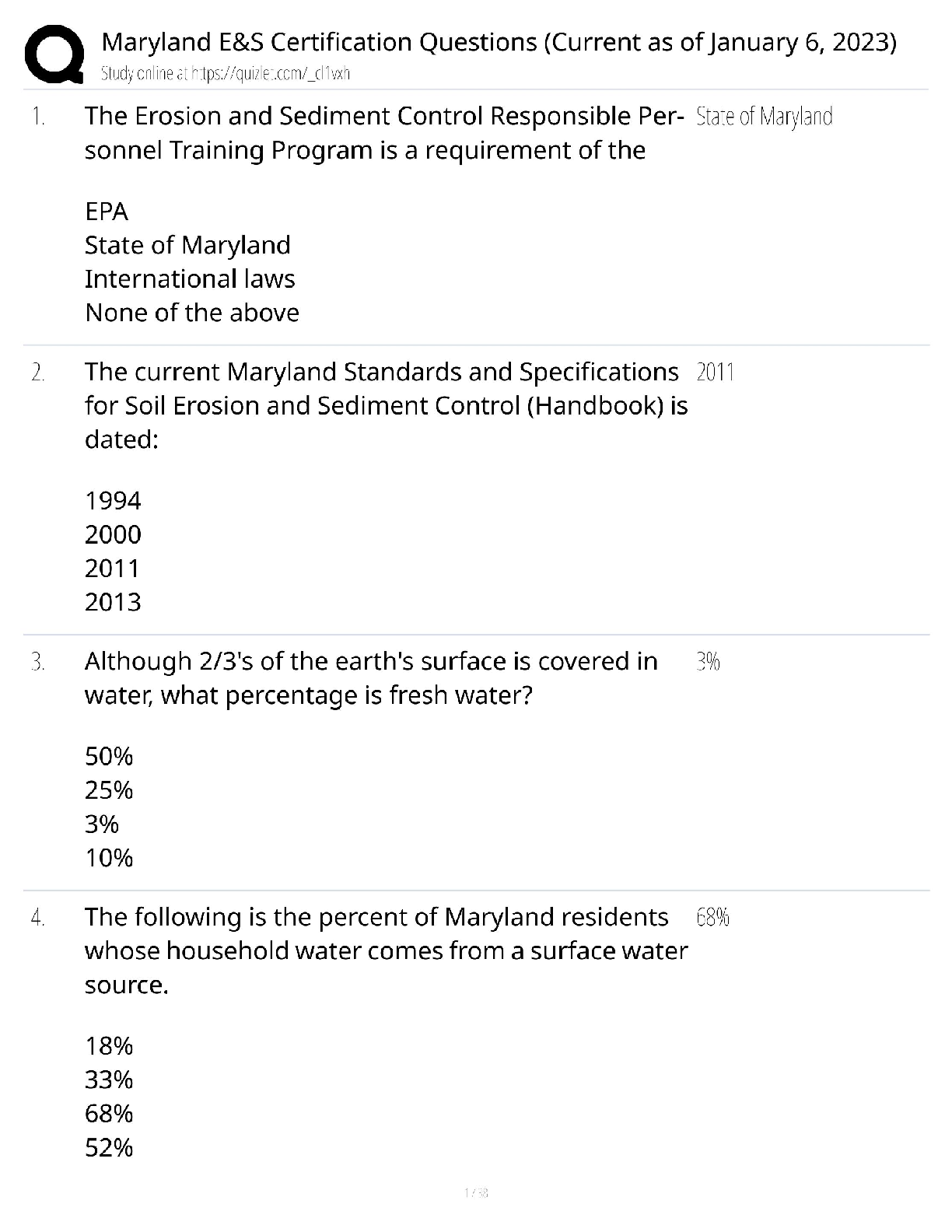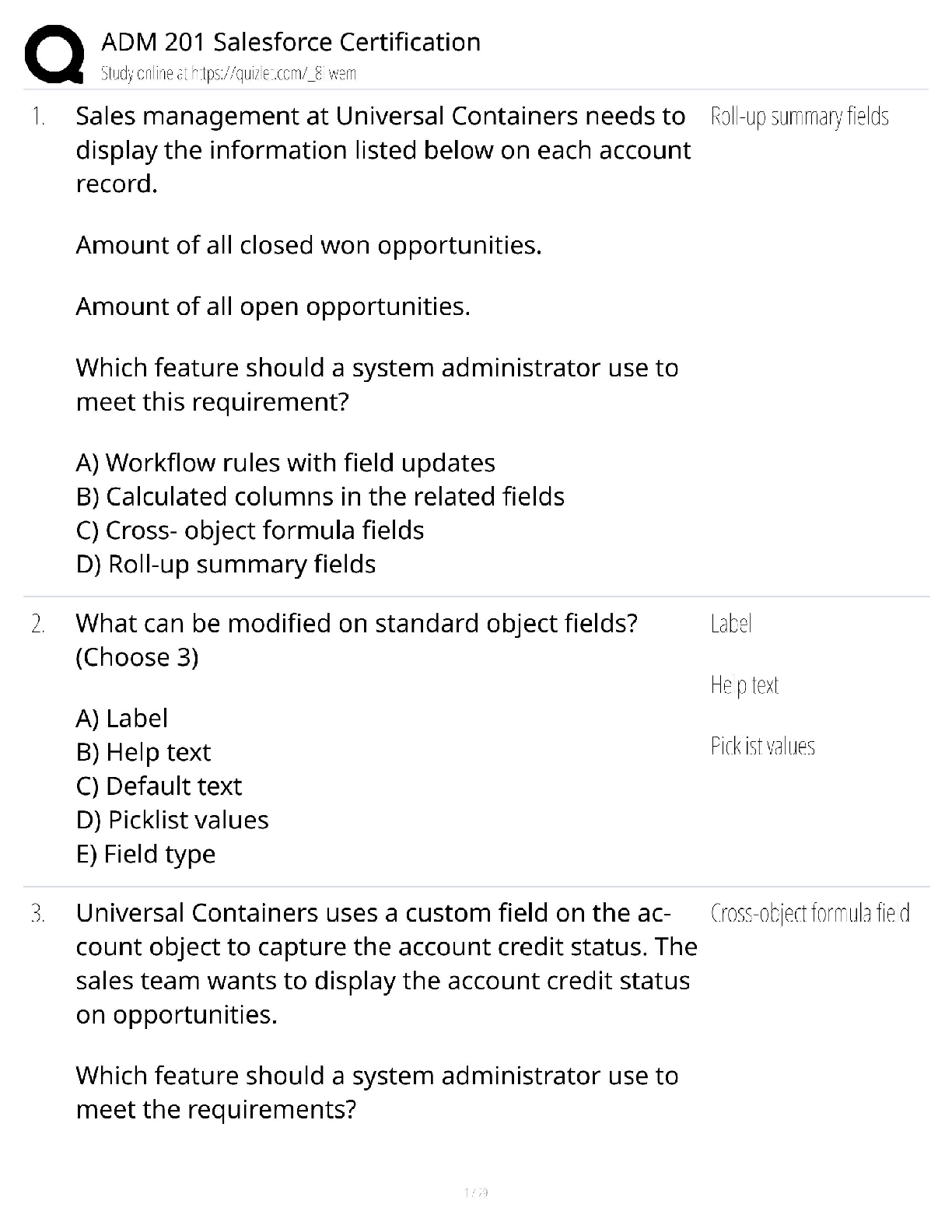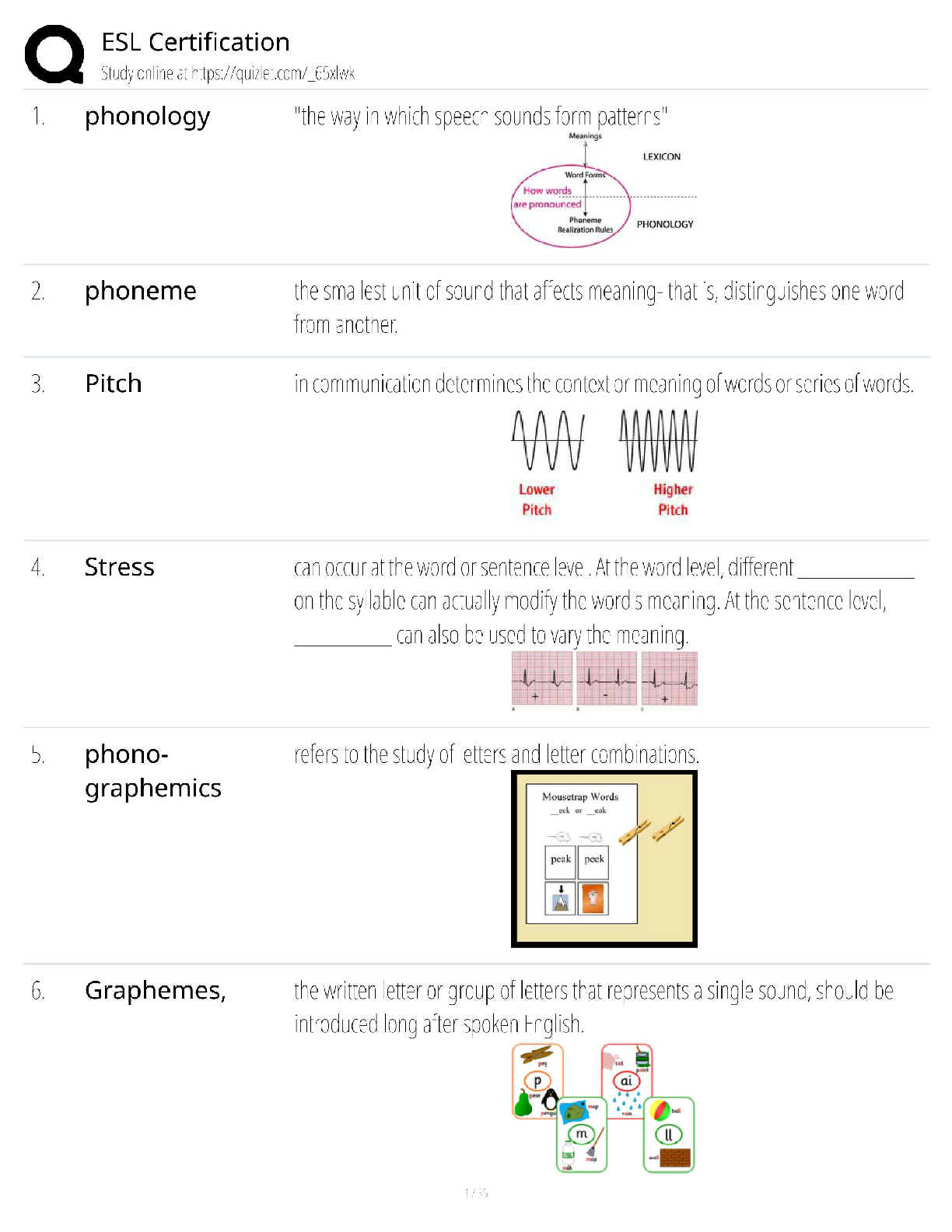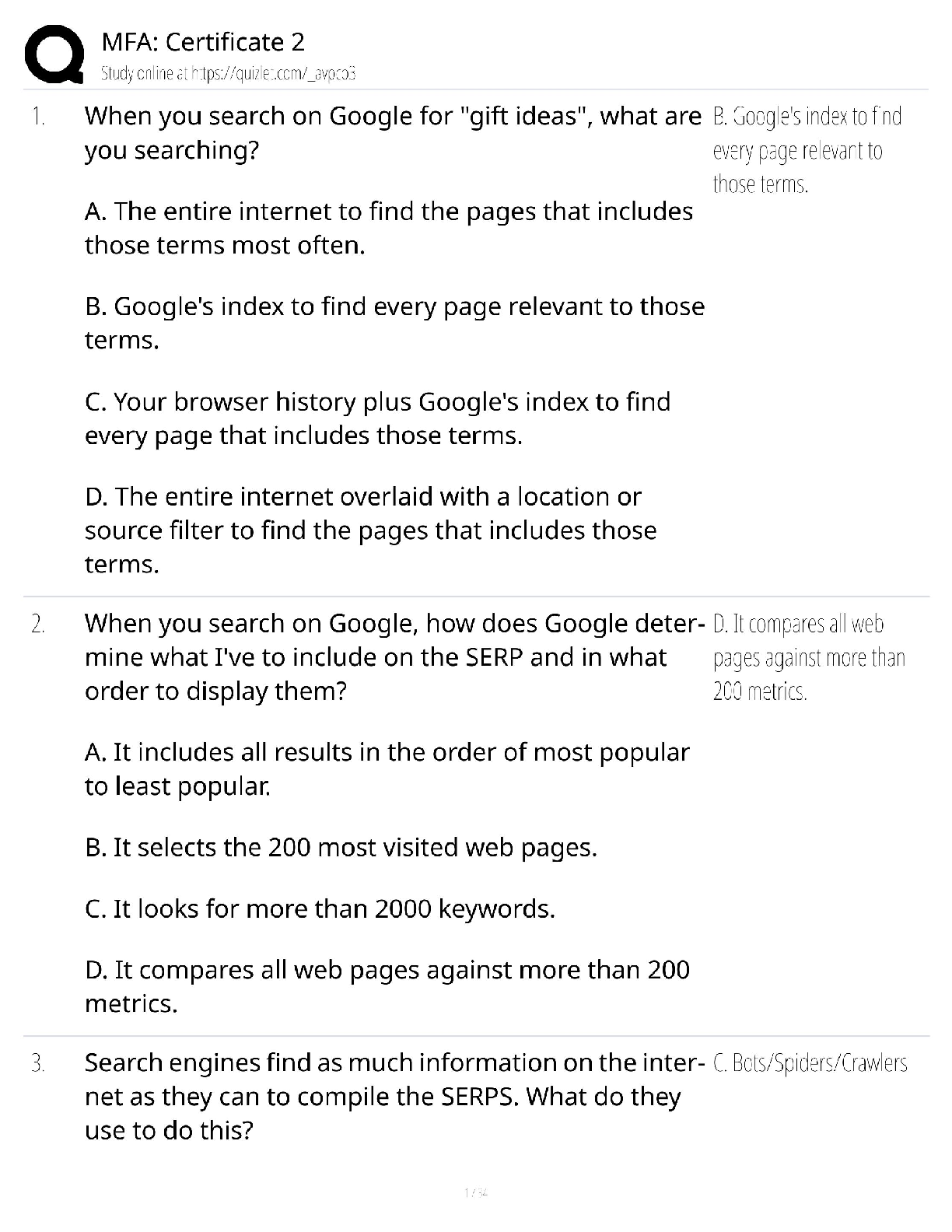Health Care > QUESTIONS & ANSWERS > NCAC 1 part 1 Questions and answers 100% Accurate. Graded A+/ (All)
NCAC 1 part 1 Questions and answers 100% Accurate. Graded A+/
Document Content and Description Below
NCAC 1 part 1 Questions and answers 100% Accurate. Graded A+/ Primary or acute withdrawal - ✔✔-The first stage of withdrawal lasting from 2 - 7 days. The strongest withdrawl symptoms are typi ... cally present. Secondary or prolonged withdrawl - ✔✔-Is the 2nd part of withdrawl and may last weeks or months symptoms of primary withdrawl - ✔✔-symptoms tend to be the opposite of direct effects of the substance itself 3 responses produced by the body when drugs are combined - ✔✔-1.) have no effect (act indepentently) 2.) multiply the effects of each other 3.) cancel out the effects of each other Psychotropic drugs - ✔✔-Any drug capable of affecting the mind, mood, and/or behavior. Alcohol: treatment application - ✔✔-administration of benzodiazepines Alcohol + sedatives - ✔✔-This mixture is remarkably dangerous when used together. They suppress the central nervous system Alcohol + Cocaine - ✔✔-- This mixture becomes a more potent heart rate stimulator. - intensified high - increased risk of sudden death Alcohol + Ecstasy (MDMA) - ✔✔-This mixture impaires the bodies ability to regulate temperature. Also higher risk of dehydration Alcohol + GHB (Xyrem) or Rohypnol (roofie) - ✔✔-Mixing of these substances is also called the Date rape drug. Produces black out periods. Alcohol + Heroin - ✔✔-Mixing of these substances increases risk of respiratory cessation. Alcohol + Marijuana - ✔✔-The mixing of these substances leads to increased risk of alcohol poisoning due to Marijuana suppressing nausea. Alcohol + Meth - ✔✔-The Depressant substance masks the effects of the stimulant substance. This results in an increase in the use of the stimulant. this raises the risk of heart attack and stroke. Alcohol + Opiates - ✔✔-The mixing of these substances increases the central nervous system effects. risk of coma, respiratory and/or cardiac arrest. Drugs classified as Tranquilizers - ✔✔-Benzodiazepines barbiturates some anti-depressants anti-psycotics The 3 categories of Sedative - Hypnotics - ✔✔-1.) Barbituates 2.) Non- Barbituates 3.) The minor tranquilizers (principally, benzodiazepines) Benzodiazepines - ✔✔-- A drug commonly used to treat anxiety and insomnia. also considered a part of the following: - tranquilizer - "Sedative - Hypnotics" - Depressant Barbiturates - ✔✔-drugs that depress the activity of the central nervous system, reducing anxiety but impairing memory and judgment also considered a part of the following: - tranquilizer - "Sedative - Hypnotics" - Depressant *highly addictive** Barbiturates + Phenobarbital - ✔✔-The mixture of these substances has shown high occurrence. Detox from Barbituates - ✔✔-- Needs to be weaned - needs to be done in the care of a medical staff Anxiolytics (Minor Tranquilizers) - ✔✔-Used most commonly for the treatment of anxiety. Psychological effects of Benzodiazepines - ✔✔-Psychological effects are similar to Alcohol. (confusion slurred speech etc). Antipsychotics (Major Tranqulizers) - ✔✔-This category of substances are typically used in treatment of major mental disorders. What plays a key role in psychotic symptoms? - ✔✔-Dopamine antiphsychotic drugs cause this: - ✔✔-constipation antipsychotic drugs + Codine - ✔✔-the mix of these drugs can cause sever constipation Cocaines methods of use are: - ✔✔-inhaled smoked or IV A stimulant that was miss-classified as a narcotic - ✔✔-Cocaine A substance that produces approximately 15-30 min of euphoria - ✔✔-Cocaine Crack Cocaine - ✔✔-When cocaine hydrochloride is mixed with baking soda and water then heated. This is not very pure Cocaine as there is reside from the baking soda. Freebase Cocaine - ✔✔-A substance produced when cocaine hydrochloride is mixed with an alkaloid solution such as ammonia, and then heated. This is a a purer form of cocaine. Crack vs Freebase cocaine - ✔✔-Freebase = hard to make, less popular Crack = popular in the 1980's, easier to make You get th he longest high from cocaine when you: - ✔✔-Snort Cocaine (15 - 30 min high) Prolonged Snorting of Cocaine leads to? - ✔✔-Damage of mucous membranes and may lead to septum collapse Effects of Cocaine - ✔✔-the substance effects: vascular construction rapid heart rate fever with risk of: chest pain cardiac arrest stroke seizures respatory failure Regular users of Cocaine may experience: - ✔✔-Regular substance user may experience: anxiety, irritability, depression, aggression, paranoia, restlessness, panic attacks, loss of appetite and malnutrition Cocaine's psychological effects are: - ✔✔-This substance blocks norepinephrine, serotonin, dopamine from being absorbed. The buildup of these neurotransmitters leads to the high. Antagonists drug class - ✔✔-blocks receptors Agnoists - ✔✔-a drug that mimics the abused drug (methadone) Antidipsotropics - ✔✔-a substance that can be taken that causes adverse reaction to a users drug of choice (antabuse) Antipsychotics - ✔✔-control the symptoms associated with use Cocaine and its effects on the heart - ✔✔-This substance effects the heart by restricting the blood vessels but increasing heart rate. this can lead to heart failure. long term use can increase the size of the left ventricle. cocaine is used most commonly with - ✔✔-tobacco and alcohol Cocain + Tobacco - ✔✔-The mixing of these substances increases risk due to creating cocaethylene it also increases the bioavailability of cocaine. Cocaine + Heroin - ✔✔-The mixing of this substance is referred to as a "speed ball". The downer decreases the effects of long term stimulant use such as agitation. low level of pleasure - ✔✔-this is linked to cocaine use due to its effects on the dopamine system Amphetamines - ✔✔-drugs that stimulate neural activity, causing speeded-up body functions and associated energy decrease in appetite and mood changes common amphetamines - ✔✔-ritalin adderall used to treat ADHD Methamphetamine - ✔✔-a powerfully addictive drug that stimulates the central nervous system, with speeded-up body functions and associated energy and mood changes; over time, appears to reduce baseline dopamine levels physiological effects of Meth - ✔✔-dry mouth (damaging oral - dental health) facial flushing bloodshot eyes hyperactivity dilated pupils bruxism (grinding teeth) headache and much more Psycolpgical effects of meth - ✔✔-alertness anxiety euphoria increased libido increased concentration enhanced self esteem irritability psychosomatic disorders repetitive/compulsive behaviors parinoia Withdrawl symptoms of Meth - ✔✔-physical fatigue increased appetite anxiety agitation cramps hypersomnia vivid or lucid dreams suicidal ideation Methamphetamine + Stimulants - ✔✔-The mixing of these substances causes the substances to increase their effects of each other Opiates - ✔✔-A category of psychoactive drugs that are chemically similar to morphine and have strong pain-relieving properties. depressants of the CNS are able to readily cross the blood-brain barrier. natural opiates - ✔✔-morphine opium and codeine synthetic opiates - ✔✔-meperidine (demerol), oxymorphone (numorphan), oxycodone (percodan), and Heroin Methadone - ✔✔-this substance is comparable to morphine in potency, but is longer acting. because it blocks the effects of other types of narcotic, methadone is useful in treating addiction to them. opiate antagonists - ✔✔-medications able to block opiate receptors in the brain: Naloxone (Narcan) Naltrexone (ReVia) Burenorphine (suboxone) Physiological effects of opiates - ✔✔-dressed respiratory system nausea slurred speech constricted pupils lack of coordination impaired reflexes constipation Psycological effects of opiates - ✔✔-euphoria impaired judgement wide mood swings depression Withdrawl symptoms of Opiates - ✔✔-sweating watery eyes tremors excessive nasal discharge nausea vomiting yawning goose bumps feaver panic attacks Opiates + other drugs that suppress the CNS - ✔✔-These drugs should never be combined, because they can lead to respiratory suppression. opiates should never be combined with: - ✔✔-alcohol benzo's Barbituates antihistamines Hallucinogens (psychedelic drugs) - ✔✔-psychedelic drugs, such as LSD, that distort perceptions and evoke sensory images in the absence of sensory input. Generally considered non-addictive. Psychedelic amphetamines (MDMA) - ✔✔-Drugs that present with euphoric/ stimulant effect which may lead them to be addictive. A substance class that can contain both substances that depress the CNS and excite. - ✔✔-Hallucinogens Types of hallucinogens - ✔✔-Mushrooms, peyote, morning glory, and nightshade family. PCP (phencyclidine) - ✔✔-This substance is often combined with LSD and marijuana. It can act as a stimulant, but is not classified as one. It has also been used as a pain killer. User's develop a tolerance to the substance and addiction can occur. LSD (lysergic acid diethylamide) - ✔✔-A powerful hallucinogenic drug; also known as acid. Tolerance builds quickly to this drug. [Show More]
Last updated: 2 years ago
Preview 1 out of 15 pages

Buy this document to get the full access instantly
Instant Download Access after purchase
Buy NowInstant download
We Accept:

Also available in bundle (1)
Click Below to Access Bundle(s)

NCAC Practice Test BUNDLE, TOP EXAM PREDICTOR QUESTIONS
NCAC Practice Test - Momentix Book, Questions with accurate answers, rated A. VERIFIED.
By Topmark 2 years ago
$36
16
Reviews( 0 )
$9.00
Can't find what you want? Try our AI powered Search
Document information
Connected school, study & course
About the document
Uploaded On
Mar 14, 2023
Number of pages
15
Written in
All
Additional information
This document has been written for:
Uploaded
Mar 14, 2023
Downloads
0
Views
142

